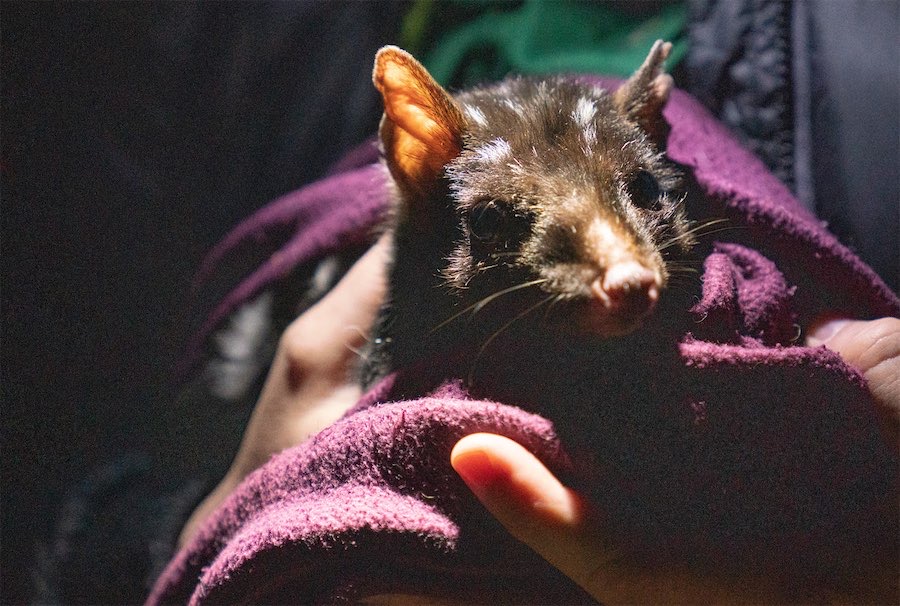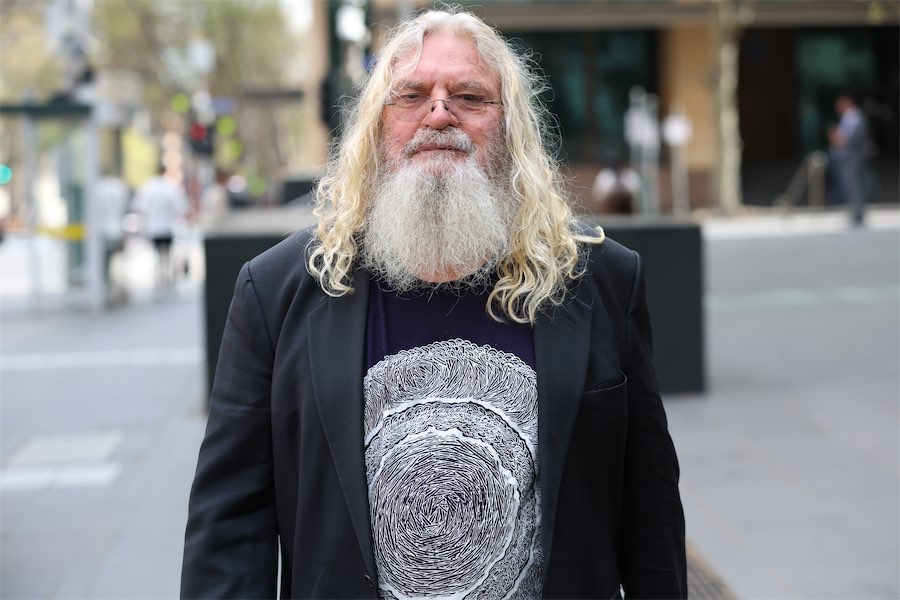
GPS tracking collars have revealed how newly reintroduced eastern quolls are settling in at Mulligans Flat Woodland Sanctuary, with quolls who were born at the sanctuary accepting their new neighbours with open paws.
The findings come from a new study led by ANU researchers. Lead author Dr Belinda Wilson said the results are “welcome news”.
“We’re at capacity at Mulligans Flat, so if we bring in new quolls for their fresh genetics, it’s important for us to know whether they’ll be absorbed into the population, or excluded,” she said.
“Thankfully, the new quolls were accepted, even sharing dens with the other residents. It was sweet to see.”
Dr Wilson and her team placed tiny GPS collars on eight newcomers and eight resident quolls.
This provided invaluable data on how the quolls moved throughout the landscape, and how they interacted with each other.
“While the new quolls initially moved around the entirety of Mulligans Flat, over time the distances they travelled became smaller and they settled into similar-sized home ranges to the residents, possibly because of the ‘anchoring’ effect of their neighbours,” Dr Wilson said.
“We had a particular den that we referred to as the ‘megaden’. At one point we had seven of the quolls hanging out there together. That showed up as an area of high activity on our maps.”
Eastern quolls are a carnivorous marsupial that became extinct on the Australian mainland in the 1960s.
In a partnership between ANU, ACT government, and the Woodlands and Wetlands Trust, the eastern quolls were reintroduced into Mulligans Flat in 2016.
“Even though eastern quolls are known to be solitary, we now know that reintroducing them into the same area as residents can actually help them stick,” Dr Wilson said.
“As we manage the population and bring ‘fresh blood’ into the sanctuary to avoid inbreeding, we’ll also send some of our extra quolls to our sister sanctuaries – that way Mulligans Flat can contribute to eastern quoll recovery across Australia’s growing network of sanctuaries.”
The research has been published in Biodiversity and Conservation.
Who can be trusted?
In a world of spin and confusion, there’s never been a more important time to support independent journalism in Canberra.
If you trust our work online and want to enforce the power of independent voices, I invite you to make a small contribution.
Every dollar of support is invested back into our journalism to help keep citynews.com.au strong and free.
Thank you,
Ian Meikle, editor




![Evie Hudson is a woman with amnesia, who forgets the last 13 years. Piecing her life back together, she navigates the harsh realities of coercive control.
Evie is the leading character in local author @emmagreyauthor's second novel Pictures of You.
Her debut book, The Last Love Note, sold more than 100,000 books worldwide within a few months of being published last year.
“I think that using amnesia really helped [show the effects of coercive control] because she had that sense of being completely lost in her own life,” Emma says of her new work of fiction.
To read the full story and find out more about this fabulous local author and her latest novel, visit our website at citynews.com.au or click the link in our bio! 📚✒️
#canberra #local #canberralocals #canberralife #australia #author #localauthor #Picturesofyou #coercivecontrolisabuse #dvawareness #bestsellingauthor #canberraauthor #localnews #citynews](https://citynews.com.au/wp-content/plugins/instagram-feed/img/placeholder.png)
Leave a Reply